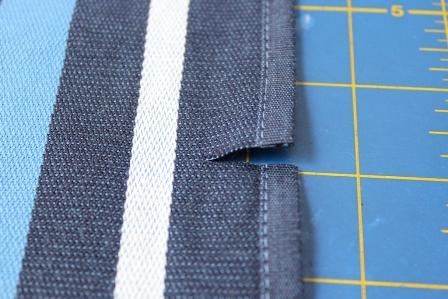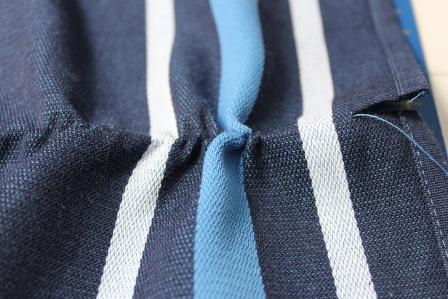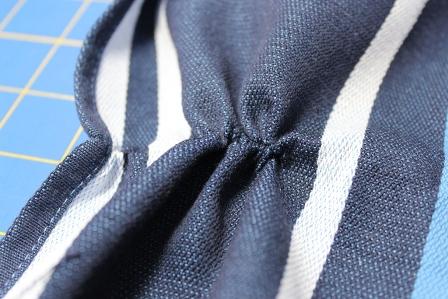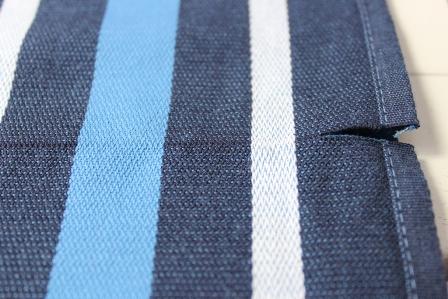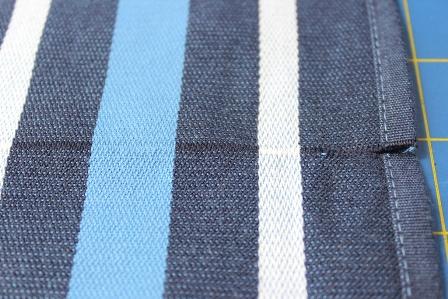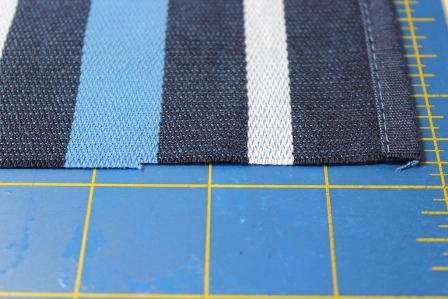Current turnaround time: 1-2 business days
New! $5 flat rate shipping for US orders under $50; still free over $50!
Cutting a wrap straight and true
I often have people wanting to send me already-cut wraps to turn into slings. I don't have a problem with that, but I frequently have to re-cut the piece after it arrives, because the original cut was made on a taper, or just because it's been cut crooked. Here's how I cut a wrap when I'm sewing, so there's a nice, straight, immediately-usable cut line.
After you have carefully measured the wrap for the desired length (and please keep in mind, if you measure incorrectly and it ends up too short, there is nothing I can do about that), measure it again just to be sure. When you're positive you have the length as you want it, make a snip in one edge of the wrap:
Tease out one of the weft (crosswise) threads -- I use my fingernails and am able to isolate one or two right away.
Gently pull on that thread, so that the fabric begins to gather along that thread. Some wraps use stronger threads than others, so this will be easier with some brands than with others. (Brand-new wraps are usually easier than ones that are broken in, but some brands, like BBSlen, are difficult to pull even when new. The more tightly-woven the fabric is, the harder it will be to pull the weft thread.) Often, my chosen thread will break several times; if that's the case, I tend to cut the area I've already pulled out, tease out another weft thread, and continue along.
Pull the weft thread all the way to the other side of the wrap, spreading the gathered fabric along as you go.
Make another snip in the other hem of the wrap.
Now you can (usually) pull that weft thread all the way out of the wrap from the side you started on:
If the contrast between the warp (lengthwise) threads and the weft (crosswise) threads is obvious enough, you only need to pull one weft thread to make a good cut. However, I usually pull three threads so that I have a better line to cut on:
Once you have a clear cutting line, go ahead and cut all the way across:
This method gives you a beautiful straight line with no fraying, and it's much easier to make even pleats with a cut like this.



